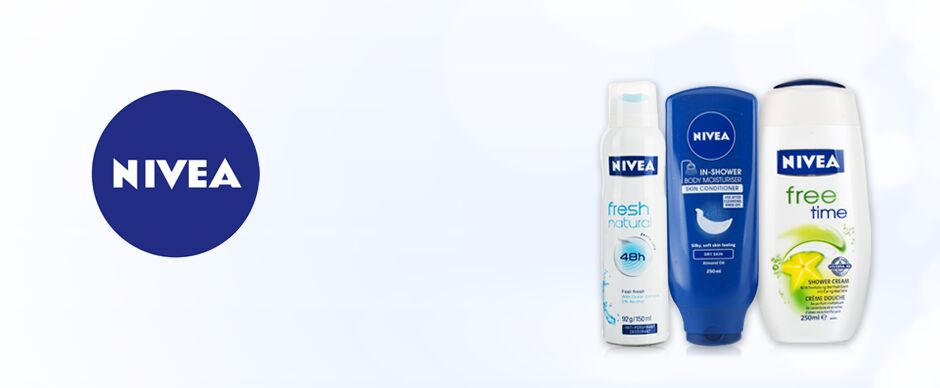
Questions about Nivea
Where does the name “NIVEA” come from?
The name Nivea is derived from Latin and means “snow white", due to the pure white NIVEA Creme.
When did the first blue NIVEA packaging appear?
As early as 1925. The very first NIVEA Creme jar arrived on the market in 1911. The original text on the lid at that time in printed script read: “NIVEA Creme for skin care. P. Beiersdorf & Co. Hamburg.”
Are NIVEA products tested on animals?
Beiersdorf does not perform animal experiments in order to assess the safety and efficacy of cosmetic products. Safety evaluation of cosmetic products is based on the toxicological data of the ingredients used. Additional (non-animal) tests might be performed depending on the product type concerned.
Why can NIVEA Creme be produced without preservatives?
NIVEA Creme is a water-in-oil (W/O) emulsion, i.e. tiny drops of water 'swim' in an oil phase. In contrast to an oil-in-water (O/W) emulsion, the water in an W/O emulsion is not readily available to microorganisms. Since it is possible to produce NIVEA Creme practically free from microbial contamination and with an even, small emulsion droplet distribution, many microbes that are introduced to the creme during use are unable to survive.
What is the shelf life for NIVEA products?
As a rule, all cosmetic products from our company have a minimum shelf life of 30 months. If products have a shorter shelf life, then the expiration date is stated on the packaging.
On products supplied after January 2005, you will find a small symbol that should eliminate any doubts concerning the level of freshness of an opened and/or forgotten product. The symbol is a small opened jar indicating a time period, such as 12M. The 12 stands for the number of months. The "M" stands for month. Once opened, the product can be used for the indicated number of months.
In addition, because it is assumed that the products that are protected from outside contamination eg. aerosols are exempt from using this symbol. Single use products eg. sachets are also not required to use this symbol.
Alcohol-free products: Is a product really alcohol-free even if cetyl alcohol, for example, is listed as an ingredient?
In chemistry there is a group of substances with the collective name 'alcohols'. Their physical states range from liquid to solid, with different properties. When 'no alcohol' is stated on a product, this refers to ethyl alcohol, which is also a component of alcoholic drinks. In cosmetic products, ethyl alcohol has a refreshing and invigorating effect but can have an overdrying effect on certain individuals who are particularly sensitive. In the full declaration of the ingredients on the packaging, ethyl alcohol is listed as 'alcohol' or 'alcohol, denat.'. The aliphatic alcohols (e.g. cetearyl alcohol or lanolin alcohol) are solid substances. They are used, for example, as emulsifying agents with a nourishing effect, which give the product the required consistency. back to top
How high is the water content in creams/lotions?
The water content of all emulsions on the market (independent of manufacturer) is between 70 – 90 %. The latest scientific studies have shown that the moisturising effect reduces the susceptibility of sensitive skins. The water content of NIVEA Creme is 70 %. It is a water-in-oil emulsion. NIVEA Creme has been popular for decades thanks to its excellent skin tolerance and nourishing properties.

